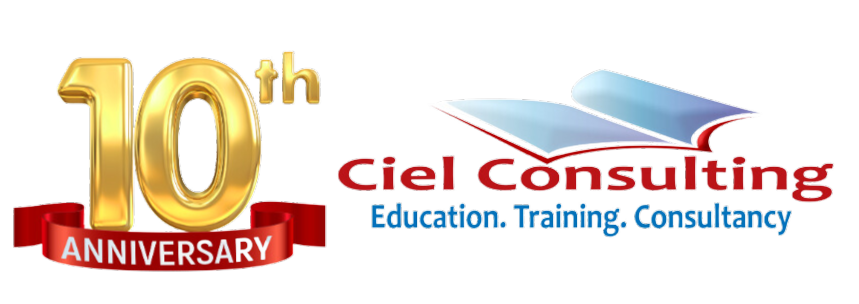MANAGEMENT SKILL
Introduction
Managing people is a tough job, and it gets even harder when you have to train new employees. In order to do a good job at training and developing new employees, you need to be able to identify their skills as well as any weaknesses they may have. This process should be ongoing so that opportunities for development are not missed along the way.
One of the biggest problems organizations face is trying to develop their people to do the job.
Skills are the "how" of the job, and they are essential to the success of an organization. Skill development is an ongoing process that requires active involvement from both managers and employees. Ideally, it should be part of a long-term training plan for everyone who works in your company. One of the biggest problems organizations face is trying to develop their people to do the job. This can be difficult because there are so many skills required by any given position that it's hard to know where to start or what direction to take when you're looking at developing new skill sets for your employees.
To begin with, identify which skills are necessary for each position in your organization and then determine how each one relates back specifically with other characteristics such as motivation level or temperament (or even age). Next look at each person individually—their strengths and weaknesses—and help them identify areas where improvement might be necessary before focusing on specific projects/assignments where those improvements could make a difference most effectively
If you fail in that task, your organization becomes stagnant and has very little growth potential.
As a manager, you are tasked with the responsibility of developing your employees and helping them develop their skills. If you fail in that task, your organization becomes stagnant and has very little growth potential.
If you don't develop your people, you can't grow your business and will lose them to other companies who do take the time to help their employees grow professionally.
The key to being able to develop your people is having a systematic approach to developing skills.
As a leader, you need to have a systematic approach to managing your people's skills. The key to being able to develop your people is having a systematic approach to developing skills.
Skills are the key to success, and they can be developed by using a systematic approach.
The first step in this process is to identify the skills that are needed.
The first step in this process is to identify the skills that are needed. In order to do this, you must be clear about what is needed and how you will measure success. You can't just say that everyone must be more productive or results-oriented; there needs to be a specific plan for how individuals will go about developing these skills.
The second step is to develop a plan for training employees on their newly identified skill set. This includes creating an outline of what will be covered during training as well as setting dates and times when they'll take place, making sure there's enough time between each session so that participants have time digest what they've learned before moving on to another topic (see our article on effective training programs). Also ensure that your communication channels are working properly so everyone knows when training sessions occur! The third step: monitoring progress after implementation has occurred by having regular check-ins with employees who've been trained and asking them how they feel their new skill set has helped them perform better at work since they were last measured—and then rewarding those who improved most significantly with promotions if possible!
You should work with each person on your team to help them identify their strengths as well as any weaknesses they may have.
As a manager, your job is to help each person on your team identify their strengths and weaknesses. While it might be tempting to just focus on the things they do poorly (because those are easier to see), you'll get much better results if you instead focus on their strengths and help them improve on the areas where they're weak.
You can also use this information as an opportunity to improve other areas of your life by leveraging those same strengths. For example, if someone has excellent communication skills but struggles with organization and time management, encourage them to use their communication skills when organizing tasks or setting priorities for themselves; this will help raise their overall performance and make them feel more confident in their ability as an employee.
You should also help them think about how they can leverage their strengths and improve on their weaknesses.
You should also help them think about how they can leverage their strengths and improve on their weaknesses. As a manager, you should be able to identify the skills that are needed in your organization. You can then develop a plan to help each person improve in those areas.
You’ll want to make sure you have the right tools and resources available for your team members as well. Make sure that everyone has access to training materials and a variety of software programs so they can become more proficient with the technology that is used in your industry or company domain.
This process should be ongoing so that you don’t miss opportunities for development.
· Being proactive is an important part of managing your career. If you wait until a problem arises to address it, it will be too late. The best way to avoid problems and take advantage of opportunities is to proactively identify them and then make the necessary adjustments.
· You should also be vigilant about identifying problems before they become big issues. It's easy for employees (even those who are high-level) to fall into patterns that aren't working for them or their company's needs—and then wonder why they're not advancing in their careers as fast as they'd like!
Skill management can help you reach your full potential.
Skill management is a process that helps you get the most out of your employees, as well as improve your organization. It's not a one-time event—it's something you do every day.
To make sure you're doing it right, let's look at the steps in skill management:
· Identify current skillsets and gaps in knowledge within the organization
· Set goals for improving those skillsets or eliminating knowledge gaps over time
· Develop plans to achieve those goals
Conclusion
So there you have it. While skill management may seem like a daunting task, it doesn’t have to be. With the right approach and some planning, you can develop your people and make sure they are ready for anything that comes their way.

